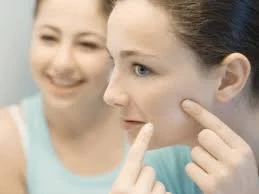Methods For Treating Acne Scars
1 min read
People of all ages suffer from the worst effects of acne scars, and need the best solutions for clearing up their faces and other affected areas of the body. While it is true that minor blemishes can often be hidden or ignored, sever e scarring is a more traumatic event that needs to be addressed.
Not only does this scarring often affect the patient's self-confidence, it can also affect the image that the patient conveys at work and in society. Facial scarring is particularly worrisome, since it can lead the patient to feel as though they have a disfigurement that makes them less attractive. Fortunately, treatments can help.
The use of lasers
Most people have heard of laser therapy for scar removal. This is a process where lasers technology is utilized for removing the epidermal layer where most surface scarring is evident. At the same time that this skin is burned away, the underlying dermal layer is heated so that a wound forms. As that skin heals, it forms a new, healthier layer of epidermis. Even where scar tissue is not completely removed, remaining blemishes are usually harder to see.
Brushing away the scar tissue
For minor surface scarring, a wire brush is often used to remove the top layer of skin that contains the scar. Dermal abrasion has proven effective for dealing with scarring on a limited basis, but is not as effective for deeper disfigurements that have reached the lower layers of skin.
Going under the knife
Surgery is generally the option that is used after other efforts have failed. Surgical removal of scar tissue can get at those deeper layers of skin and simply cuts out the scarred tissue. Surgeons then use graft tissue to repair the resulting holes in the skin.
Natural therapies are also used by many patients to lighten and remove minor scarring. There are a variety of ointments, oils, and natural juices that can work for this purpose. It is generally a god idea to at least attempt these natural remedies prior to utilizing the more advances forms of treatment for acne scars.
Not only does this scarring often affect the patient's self-confidence, it can also affect the image that the patient conveys at work and in society. Facial scarring is particularly worrisome, since it can lead the patient to feel as though they have a disfigurement that makes them less attractive. Fortunately, treatments can help.
The use of lasers
Most people have heard of laser therapy for scar removal. This is a process where lasers technology is utilized for removing the epidermal layer where most surface scarring is evident. At the same time that this skin is burned away, the underlying dermal layer is heated so that a wound forms. As that skin heals, it forms a new, healthier layer of epidermis. Even where scar tissue is not completely removed, remaining blemishes are usually harder to see.
Brushing away the scar tissue
For minor surface scarring, a wire brush is often used to remove the top layer of skin that contains the scar. Dermal abrasion has proven effective for dealing with scarring on a limited basis, but is not as effective for deeper disfigurements that have reached the lower layers of skin.
Going under the knife
Surgery is generally the option that is used after other efforts have failed. Surgical removal of scar tissue can get at those deeper layers of skin and simply cuts out the scarred tissue. Surgeons then use graft tissue to repair the resulting holes in the skin.
Natural therapies are also used by many patients to lighten and remove minor scarring. There are a variety of ointments, oils, and natural juices that can work for this purpose. It is generally a god idea to at least attempt these natural remedies prior to utilizing the more advances forms of treatment for acne scars.
